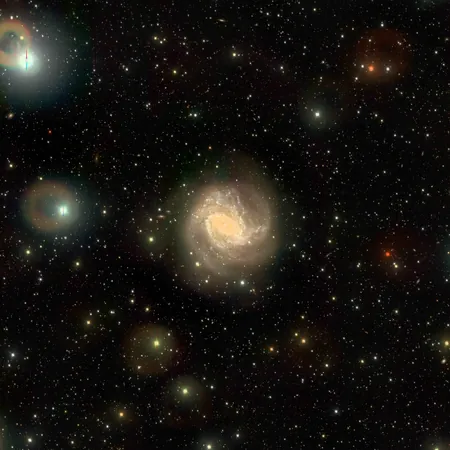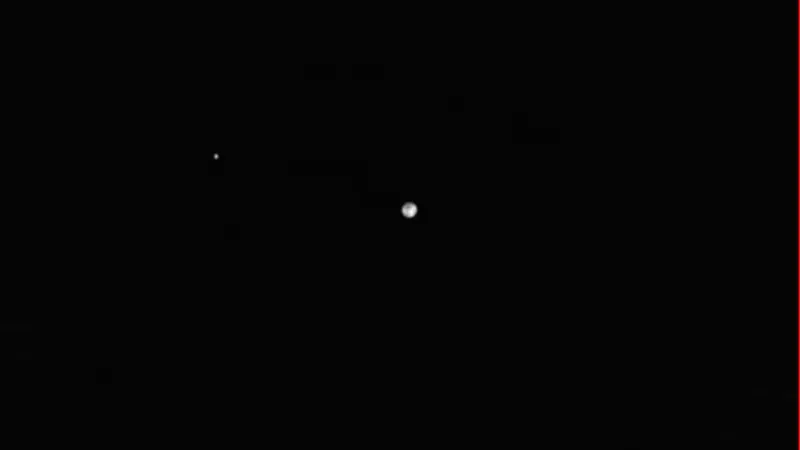
Stunning New Images of Our Galactic Neighbors: Unlocking the Mysteries of the Universe!
2024-11-15
Author: Nur
Introducing New Galactic Discoveries
The National Institute for Astrophysics (INAF) has unveiled breathtaking images of five significant galaxies from our cosmic neighborhood, captured by the Italian VST Survey Telescope (VST) located in Chile. These striking images reveal intricate details of the galaxies' shapes, colors, and star distributions, extending far beyond their centers.
Highlights of the Galactic Line-up
Among the impressive lineup are the irregular galaxy NGC 3109 and the dwarf galaxy Sextant A. These stellar bodies lie on the outskirts of the Local Group—which includes our own Milky Way—and are approximately 4 million light-years distant. Meanwhile, the stunning spiral galaxy NGC 5236, also known as the Southern Pinwheel, sits 15 million light-years away, and NGC 5253 is just 11 million light-years distant. The star of the show, the spiral galaxy IC 5332, is the farthest of the group at a staggering 30 million light-years away!
The VST-SMASH Initiative
These observations are part of a broader initiative known as the VST Survey of Mass Assembly and Structural Hierarchy (VST-SMASH), led by Crescenzo Tortora, an INAF researcher based in Naples. The overarching goal is to decipher how the diverse array of galaxies throughout the universe came into existence.
The Power of the VST Telescope
The VST is a powerful telescope featuring a 2.6-meter diameter mirror, operational at the European Southern Observatory’s Cerro Paranal facility since 2012. The team is investigating a total of 27 galaxies with the hopes of gleaning deeper insights into their formation mechanisms. Interestingly, these selected galaxies will also be observed by the European Space Agency's upcoming Euclid satellite, which promises to deliver enhanced optical data, complementing the existing space data collected at red and near-infrared wavelengths.
Research Goals and Context
In a paper recently published in The Messenger, Tortora outlines the ambitious objectives of this survey: “We aim to understand galaxy formation as related to their mass and morphology. This entails exploring both the in-situ star formation within galaxies and the ex-situ processes, whereby stars are accumulated via mergers with other galaxies.”
Insights into Galactic Evolution
These explorations will provide critical clues to the historical interactions between galaxies by highlighting faint structures and dim satellite galaxies that orbit around them. This information is essential for understanding the hierarchical evolution of cosmic structures.
Promising Early Results
Although the team’s analysis is still in its infancy, early results are promising. They indicate that the VST telescope's high sensitivity has allowed the researchers to identify previously elusive low-surface-brightness features.
A Unique Observational Capability
The VST's unique large field of view—a square degree roughly four times the area of the full moon—has enabled rapid observation, requiring just 10 hours to capture each degree squared using three different filters. In contrast, reproducing a single image with the Hubble Space Telescope could involve much longer observation times.
Significance of the Findings
"This comprehensive observation marks the first time all these galaxies have been documented in such depth and detail with consistent data," Tortora notes, underscoring the value of this research. “In the future, only the Euclid mission will match our optical depths, but it will lack the extensive optical coverage that the VST provides."
Future Prospects in Astronomy
It’s worth mentioning that while the Vera Rubin Observatory will also explore similar spectral realms, it may take years of observations to reach comparable depths. This positions the VST as a crucial instrument in the current astronomical landscape, promising exciting findings in the quest to unravel the mysteries of our universe! Stay tuned for more groundbreaking discoveries as the research unfolds!





 Brasil (PT)
Brasil (PT)
 Canada (EN)
Canada (EN)
 Chile (ES)
Chile (ES)
 España (ES)
España (ES)
 France (FR)
France (FR)
 Hong Kong (EN)
Hong Kong (EN)
 Italia (IT)
Italia (IT)
 日本 (JA)
日本 (JA)
 Magyarország (HU)
Magyarország (HU)
 Norge (NO)
Norge (NO)
 Polska (PL)
Polska (PL)
 Schweiz (DE)
Schweiz (DE)
 Singapore (EN)
Singapore (EN)
 Sverige (SV)
Sverige (SV)
 Suomi (FI)
Suomi (FI)
 Türkiye (TR)
Türkiye (TR)